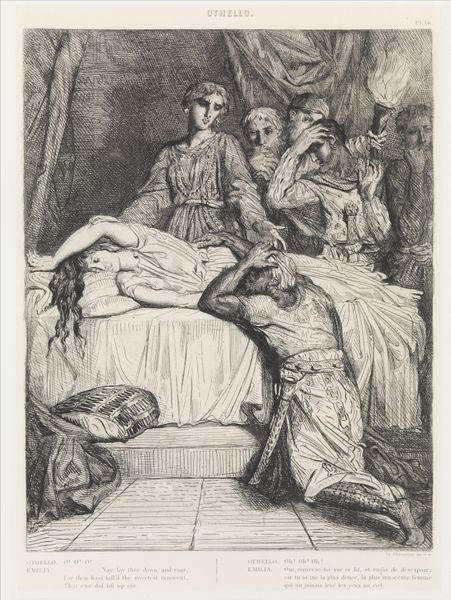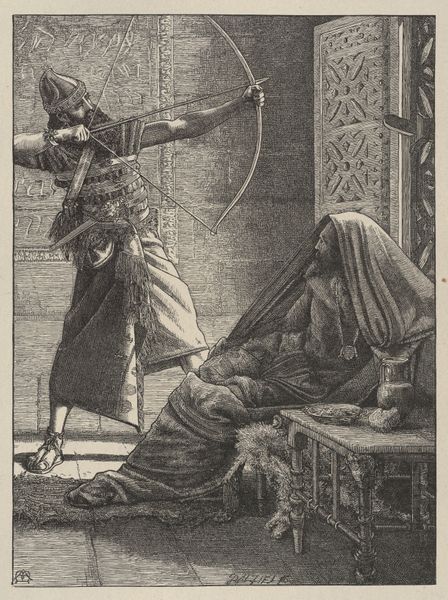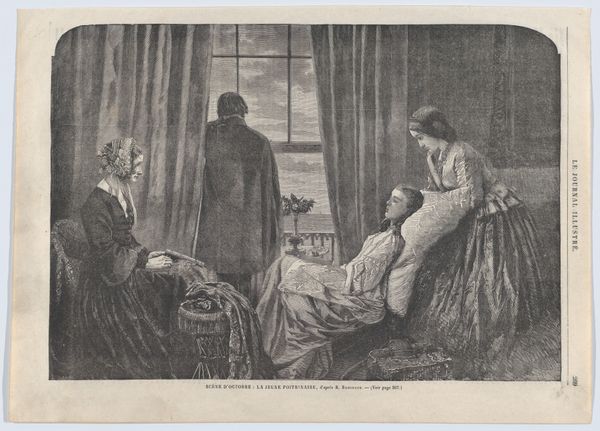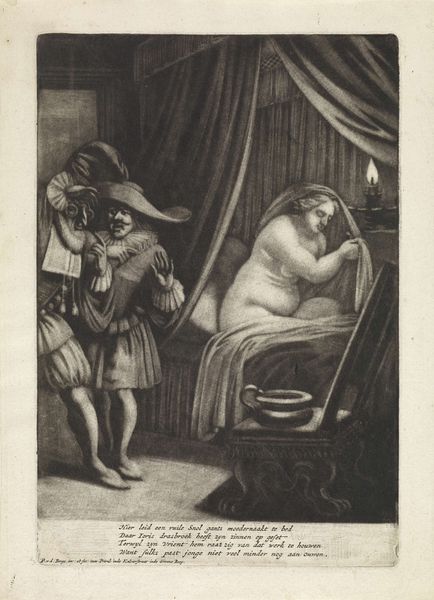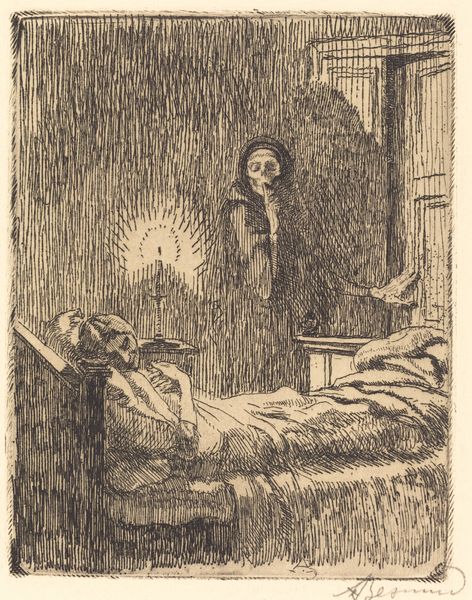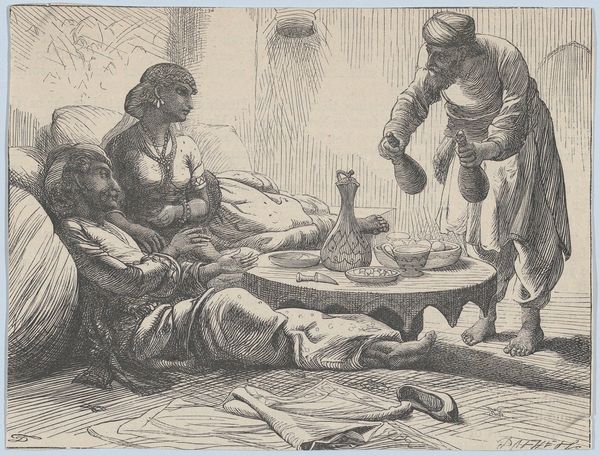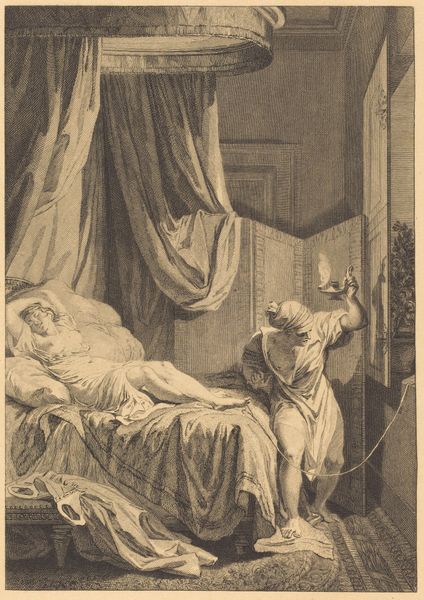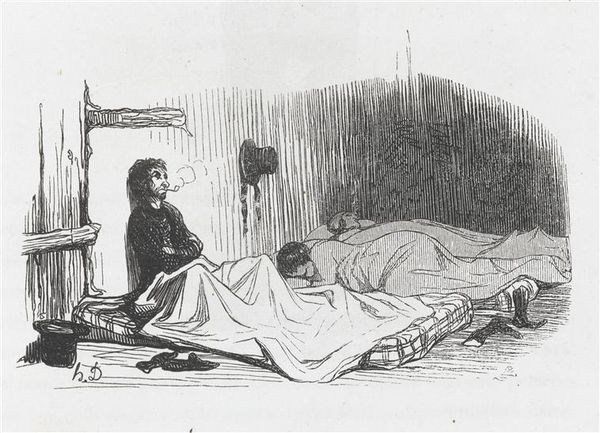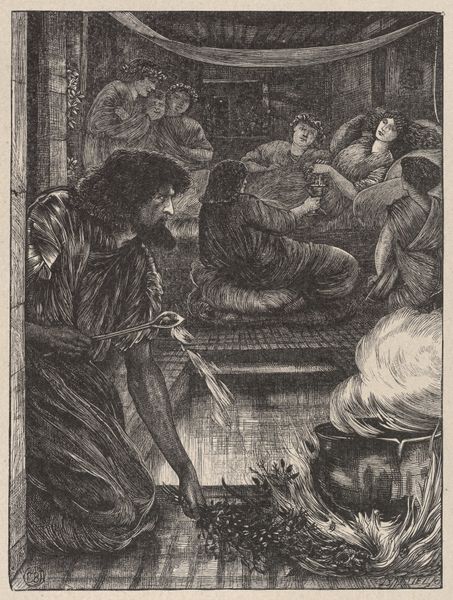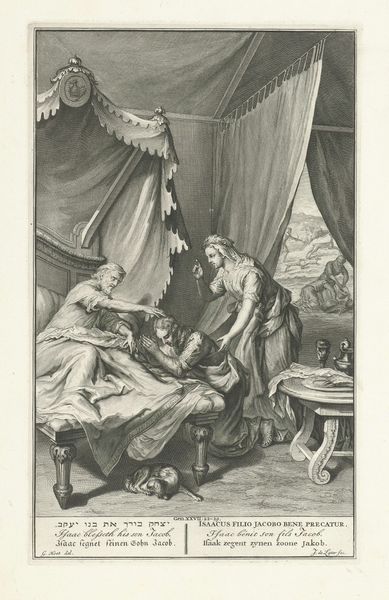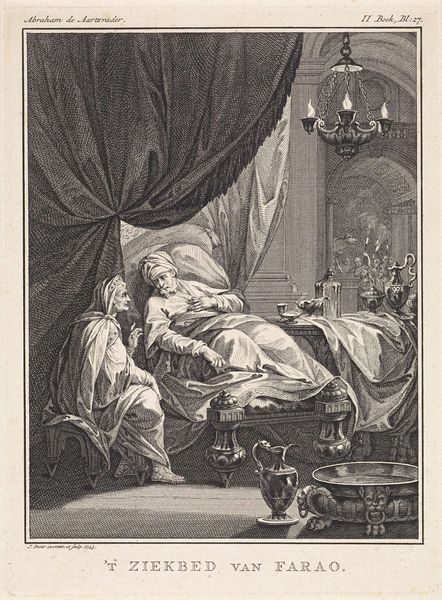
Esther Denouncing Haman, from "Dalziels' Bible Gallery" 1865 - 1881
drawing, print, engraving
portrait
drawing
narrative-art
history-painting
engraving
Dimensions: Image: 8 7/8 × 6 15/16 in. (22.6 × 17.6 cm) India sheet: 10 13/16 × 8 1/2 in. (27.5 × 21.6 cm) Mount: 16 7/16 in. × 12 15/16 in. (41.8 × 32.8 cm)
Copyright: Public Domain
Curator: This engraving, "Esther Denouncing Haman," was created by Edward Frederick Brewtnall sometime between 1865 and 1881, and it’s part of a series called "Dalziels' Bible Gallery." Editor: It strikes me as a scene thick with tension and drama. The sharply rendered lines and the contrasting light and shadow create a visually unsettling composition, almost like a stage set. Curator: Absolutely. Brewtnall's work speaks volumes about Victorian-era anxieties and power dynamics. Esther, a Jewish woman and Queen, is exposing Haman's genocidal plot to her husband, King Ahasuerus. It is a compelling study in how one's identity informs political agency and challenges dominant narratives. The moment reflects profound courage to overturn patriarchy. Editor: Yes, and there are so many visual cues layered into this piece! Look at the iconography: the king’s robes, the fans held by attendants – they are all symbols of power, but are rendered impotent by Esther’s truth. Even the sword leaning near Haman underscores his impending doom, acting as a visual symbol of justice about to be served. Curator: Precisely! The act of kneeling, and in particular, of begging, was designed to communicate something specific in a period in which it became more normal to communicate in the new mass media. Kneeling before a woman is a direct visual rebellion. One could see Brewtnall working to reflect ideas of equality of the time. The power shift challenges deeply entrenched hierarchies of gender and status. Editor: And the room is rife with implication; its trappings symbolize authority undermined. But notice Esther’s body language - she gestures, she seems to claim a higher moral ground and that challenges more familiar poses of that era. How can we decode all that to understand its appeal at that specific historical moment? Curator: These visual cues are key to unpacking the engraving’s meaning. Considering the piece within the landscape of contemporaneous debates around class, gender and Jewish emancipation within the British Empire can grant an amazing reading of how this piece functioned socially. Editor: Looking closely reminds us how certain images and symbols have functioned across cultures and periods. Curator: It's a potent reminder of art's capacity to participate directly in discourse.
Comments
No comments
Be the first to comment and join the conversation on the ultimate creative platform.
